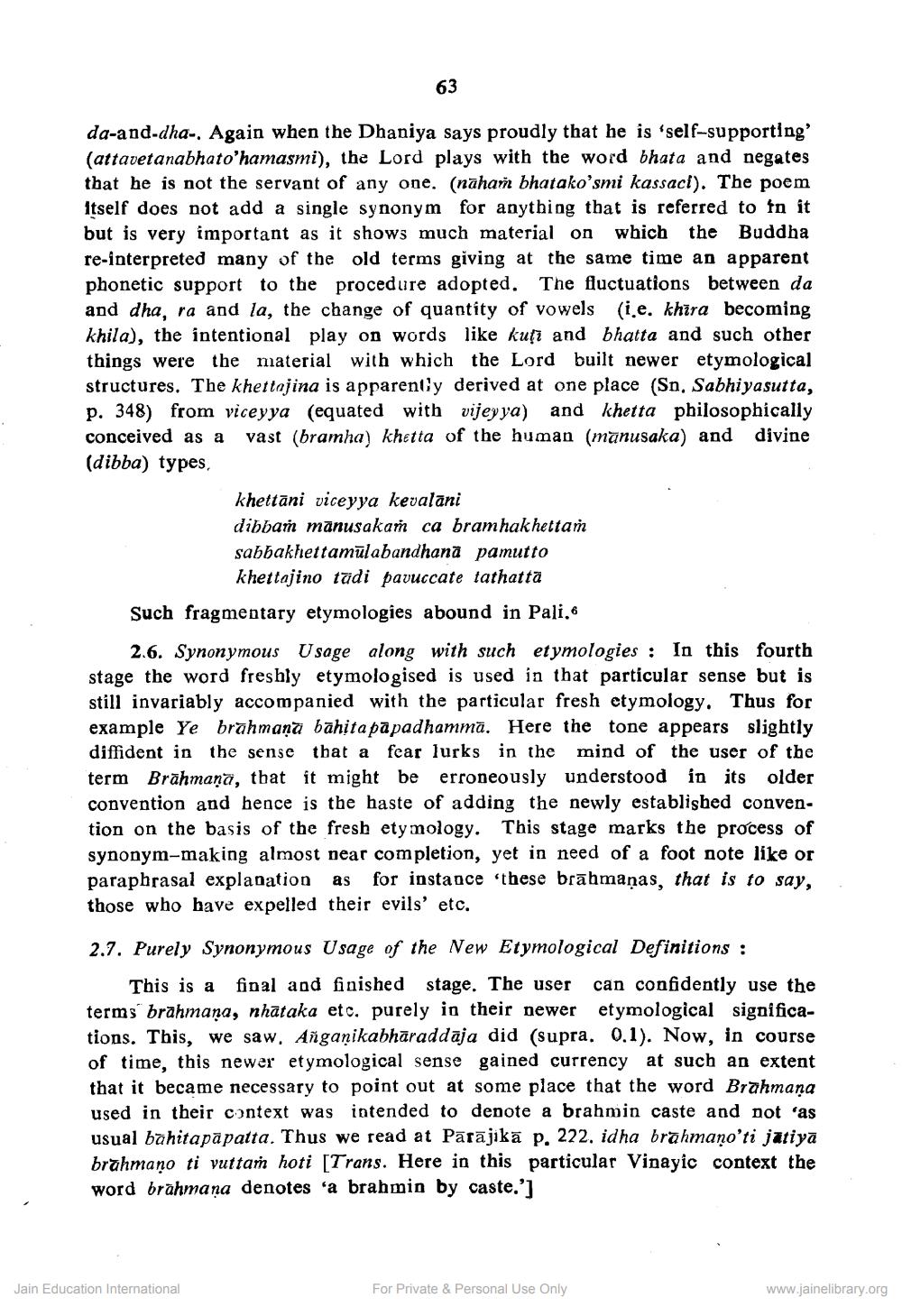________________
63
da-and-dha-. Again when the Dhaniya says proudly that he is 'self-supporting' (attavetanabhato'hamasmi), the Lord plays with the word bhata and negates that he is not the servant of any one. (nahan bhatako'smi kassaci). The poem Itself does not add a single synonym for anything that is referred to in it but is very important as it shows much material on which the Buddha re-interpreted many of the old terms giving at the same time an apparent phonetic support to the procedure adopted. The fluctuations between da and dha, ra and la, the change of quantity of vowels (i.e. khīra becoming khila), the intentional play on words like kuți and bhatta and such other things were the material with which the Lord built newer etymological structures. The khettajina is apparently derived at one place (Sn. Sabhiyasutta, p. 348) from viceyya (equated with vijeyya) and khetta philosophically conceived as a vast (bramha) khetta of the human (manusaka) and divine (dibba) types
khettāni viceyya kevalani dibbam mānusakan ca bramhakhettam sabhakhettamulabandhana pamutto
khettajino tudi pavuccate tathatta Such fragmentary etymologies abound in Pali..
2.6. Synonymous Usage along with such etymologies : In this fourth stage the word freshly etymologised is used in that particular sense but is still invariably accompanied with the particular fresh etymology. Thus for example Ye brahmanā bāhita papadhammā. Here the tone appears slightly diffident in the sense that a fear lurks in the mind of the user of the term Brāhmaṇa, that it might be erroneously understood in its older convention and hence is the haste of adding the newly established convention on the basis of the fresh etymology. This stage marks the process of synonym-making almost near completion, yet in need of a foot note like or paraphrasal explanation as for instance these brāhmaṇas, that is to say, those who have expelled their evils' etc.
2.7. Purely Synonymous Usage of the New Etymological Definitions :
This is a final and finished stage. The user can confidently use the terms brahmana, nhātaka etc. purely in their newer etymological significations. This, we saw. Anganikabhāraddaja did (supra. 0.1). Now, in course of time, this newer etymological sense gained currency at such an extent that it became necessary to point out at some place that the word Brahmana used in their context was intended to denote a brahmin caste and not as usual bahitapāpatta. Thus we read at Pārājikā p. 222. id ha brāhmaṇo'ti jatiya brāhmaṇo ti vuttam hoti [Trans. Here in this particular Vinayic context the word brāhmana denotes 'a brahmin by caste.')
Jain Education International
For Private & Personal Use Only
www.jainelibrary.org




